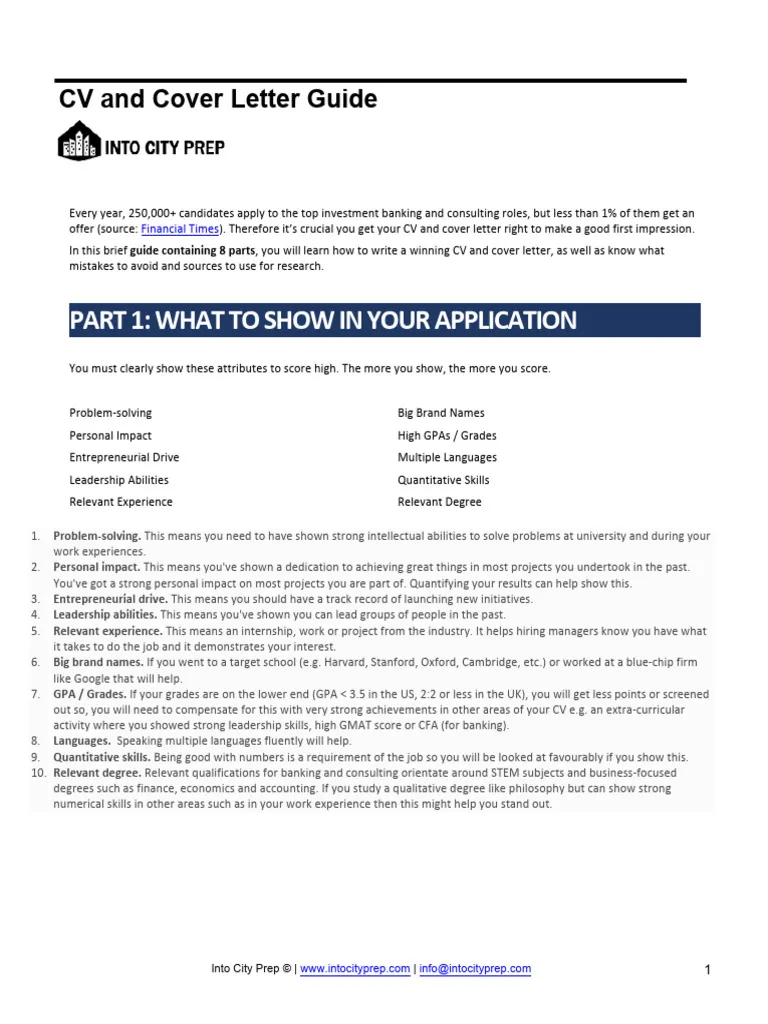Why a Cover Letter in a CV Matters
In today’s competitive job market, a cover letter is more than just an optional extra; it’s a vital tool in your job search arsenal. It serves as your initial introduction to a potential employer, offering you the opportunity to make a strong first impression and showcase your personality, skills, and experience in a way that a standard CV might not. A well-crafted cover letter provides context to your CV, allowing you to highlight specific achievements, explain career transitions, and express your enthusiasm for the role and the company. It’s where you can connect the dots between your qualifications and the job requirements, demonstrating a clear understanding of the role and how your skills align with the employer’s needs. Failing to include a cover letter, or submitting a poorly written one, can inadvertently signal a lack of attention to detail or a lack of genuine interest, potentially leading to your application being overlooked. It allows you to personalize your application, showing you have taken the time to understand the role and the company.
Highlighting Your Skills and Experience
Your cover letter is an ideal space to bring your skills and experience to the forefront. While your CV provides a comprehensive overview, your cover letter allows you to specifically pinpoint the most relevant skills and experiences that align with the job description. Don’t just list your skills; provide examples of how you’ve used them to achieve results in previous roles. Use action verbs to describe your accomplishments and quantify your achievements whenever possible. For example, instead of saying ‘Managed projects,’ you could write ‘Managed cross-functional projects, resulting in a 15% reduction in project completion time and a 10% cost saving.’ This demonstrates your ability to not only perform the tasks but also to deliver tangible value. By focusing on the most pertinent aspects of your background, you demonstrate a clear understanding of the job’s requirements and position yourself as a strong candidate.
Tailoring Your Cover Letter
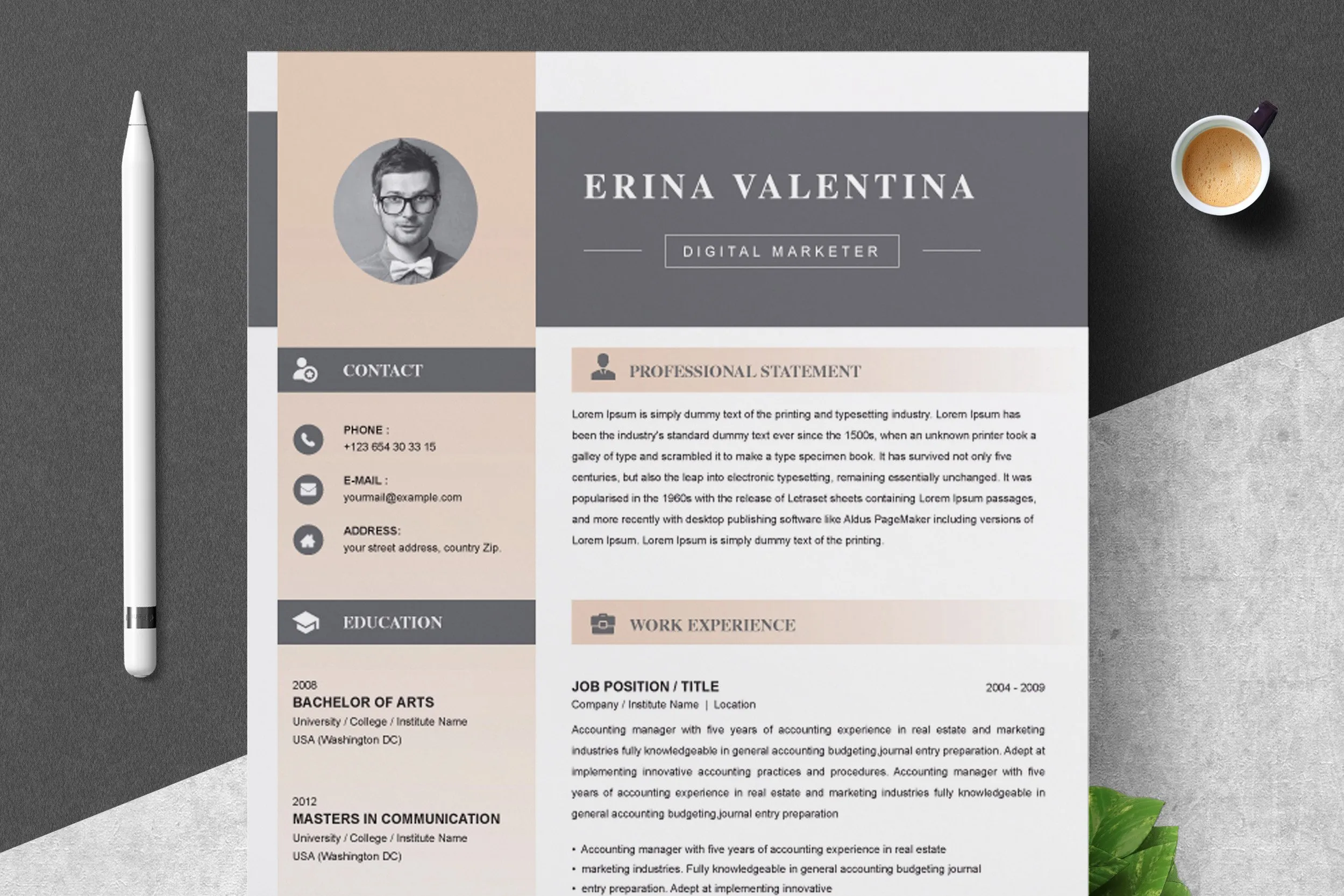
One of the biggest mistakes job seekers make is sending out generic cover letters. Each cover letter should be meticulously tailored to the specific job and company you are applying to. This requires researching the company, understanding its values, and reviewing the job description carefully. Address the specific requirements outlined in the job posting and highlight how your skills and experiences directly match these requirements. Show, don’t just tell. Give concrete examples of how you have successfully tackled similar challenges or used comparable skills in previous roles. Demonstrate that you’ve taken the time to understand what the company is looking for and that you’re not just sending out a blanket application. Research the company, its mission, and its recent activities. Show that you are genuinely interested in the opportunity and that you understand the company’s needs.
Showcasing Your Personality
A cover letter isn’t just a recitation of your resume; it’s an opportunity to inject your personality and passion into your application. While maintaining a professional tone is crucial, let your enthusiasm for the role and the company shine through. Use your cover letter to showcase your communication style and to illustrate how you approach your work. Think of it as an introduction to the ‘real you’ beyond the list of qualifications. Show that you are a person, not just a collection of skills. This personalization makes your application memorable and distinguishes you from other candidates who may have similar qualifications. Share a brief anecdote or a relevant accomplishment that illustrates your character, work ethic, or a unique perspective you bring to the table, as well as let the employer knows you’re interested in the role.
Formatting and Presentation
The formatting and presentation of your cover letter are just as important as its content. Your cover letter is a reflection of your attention to detail and your professionalism. Use a clean, easy-to-read font like Arial or Times New Roman, and ensure your font size is appropriate (usually 11 or 12 points). Maintain consistent formatting throughout your letter, including consistent spacing and alignment. Proofread your cover letter carefully for any typos, grammatical errors, or inconsistencies. A well-formatted and error-free cover letter demonstrates that you take pride in your work and that you’re capable of producing polished, professional documents. Check your cover letter on different devices to ensure it displays correctly on various platforms, including computers, tablets, and smartphones. This ensures that your letter is accessible and visually appealing to all potential employers.
Common Mistakes to Avoid
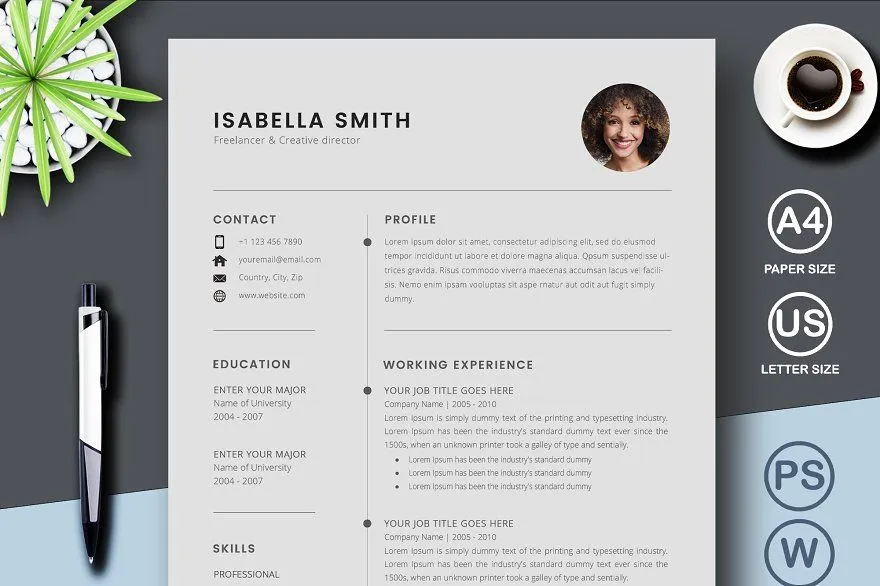
Several common pitfalls can undermine your cover letter’s effectiveness. Avoid clichés and generic phrases that lack originality. Instead, use specific examples and tailor your letter to the role. Do not simply rehash your resume; instead, use the cover letter to expand on your qualifications. Keep your cover letter concise and focused, aiming for one page in length. Make sure to avoid typos and grammatical errors, as they can create a negative impression. Ensure that your tone is professional and enthusiastic, avoiding overly casual language. Proofread your letter meticulously, and have a friend or colleague review it for you, too. Avoid using a generic salutation like ‘To Whom It May Concern’. Instead, research the name of the hiring manager or the specific person you should address the letter to. A little extra effort can make a big difference and increase your chances of getting noticed.
What to Include in Your Cover Letter
Header Information and Salutation
Your cover letter should begin with your contact information, including your name, address, phone number, and email address. Include the date and the recipient’s information, including their name, title, company, and address, if available. Choose a professional salutation like ‘Dear Mr./Ms. [Last Name]’ when you know the hiring manager’s name. If you are unsure of the name, research online or use a general greeting like ‘Dear Hiring Manager’, avoiding generic greetings like ‘To Whom It May Concern’. This personalization demonstrates that you have taken the time to research the company and the role.
The Body Paragraphs
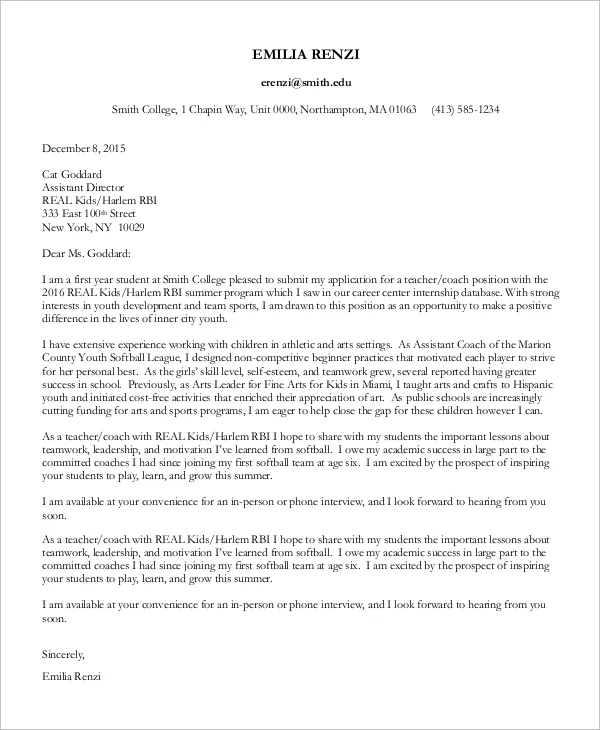
The body of your cover letter should be structured into several well-defined paragraphs. Start with a strong opening that states the position you are applying for and how you found the opportunity. In the following paragraphs, highlight your key skills and experiences, providing specific examples of your accomplishments and quantifying your results whenever possible. Clearly explain how your skills align with the requirements of the job description. Demonstrate your understanding of the company’s mission and values and how your goals align with them. Keep your paragraphs concise, focused, and easy to read. Avoid overly long sentences or paragraphs that can make your letter difficult to follow.
The Closing and Call to Action
Conclude your cover letter with a strong closing paragraph. Express your enthusiasm for the opportunity and reiterate your interest in the role. Thank the hiring manager for their time and consideration. Include a call to action, such as stating that you are available for an interview or that you will follow up in a week. Use a professional closing like ‘Sincerely’ or ‘Best regards,’ followed by your typed name. Be sure to proofread the entire letter one final time to ensure it is free of errors and reflects your professionalism. The closing paragraph should leave a lasting positive impression and reinforce your interest in the position.
Proofreading and Editing
Before submitting your cover letter, it is crucial to proofread and edit it meticulously. Typos, grammatical errors, and inconsistencies can significantly damage your credibility and create a negative impression. Read your letter aloud to catch any awkward phrasing or run-on sentences. Use grammar and spell-checking tools to identify any errors. Have a trusted friend, family member, or career advisor review your cover letter for clarity, accuracy, and overall impact. Fresh eyes can often spot mistakes that you might have missed. Pay close attention to the tone and style of your letter, ensuring it is professional and reflects your best qualities. Proofreading is an essential step in the cover letter writing process.
Making a Great First Impression
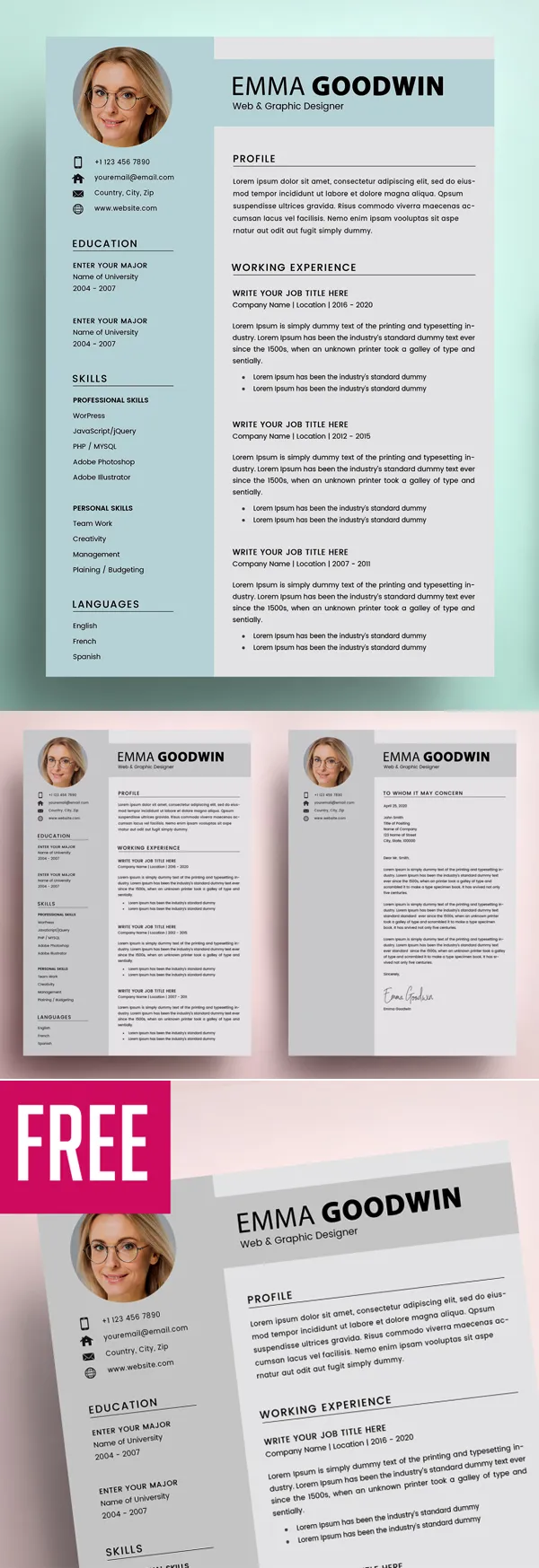
Highlighting Achievements, Not Just Duties
Focusing on your achievements, rather than just listing your duties, is a key aspect of making a great first impression. Instead of simply stating what you did in previous roles, highlight the results you achieved. Quantify your accomplishments whenever possible. For example, instead of writing ‘Managed social media accounts,’ write ‘Increased social media engagement by 30% and grew followers by 20% within six months.’ Use action verbs to describe your achievements and focus on the impact you made. This approach demonstrates your value to the employer and showcases your ability to deliver results. Your cover letter is a place to show what you’ve done not just what you were responsible for.
Using Action Verbs Effectively
Using strong action verbs is essential to make your cover letter dynamic and engaging. Action verbs bring your accomplishments to life and demonstrate your capabilities. Use a variety of action verbs to describe your experiences and avoid repetition. Examples include ‘achieved,’ ‘managed,’ ‘developed,’ ‘implemented,’ ’led,’ ‘created,’ ‘improved,’ ‘increased,’ ‘reduced,’ and ‘optimized.’ Select verbs that accurately reflect your actions and the impact of your work. Using strong action verbs makes your cover letter more compelling and shows that you’re proactive and results-oriented.
Quantifying Your Accomplishments
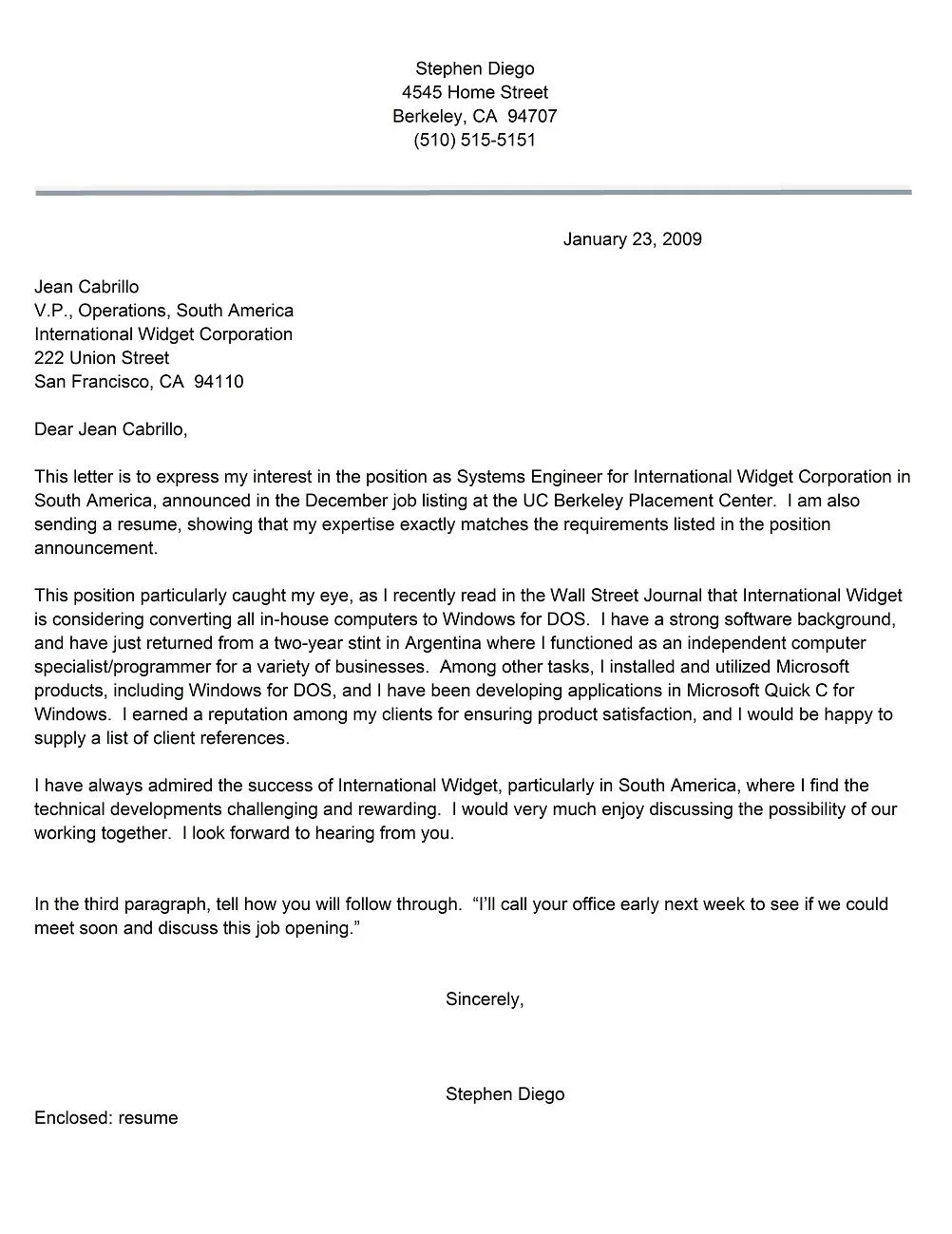
Quantifying your accomplishments adds credibility and impact to your cover letter. Whenever possible, use numbers and data to support your claims. This provides concrete evidence of your achievements and helps the employer understand the value you brought to previous roles. Examples include: ‘Increased sales by 15%’, ‘Reduced customer complaints by 10%’, ‘Managed a budget of $500,000,’ and ‘Led a team of 10 employees.’ Quantifying your achievements demonstrates your ability to measure and track results and shows the employer how you can contribute to their organization’s success. Using statistics and data proves that you can deliver results and not just make claims.
Matching Your Cover Letter to the Job Description
Addressing Specific Requirements
Carefully read the job description and identify the key requirements, skills, and qualifications that the employer is seeking. Tailor your cover letter to directly address these requirements. Provide specific examples of how your skills and experiences align with the job’s needs. Use the same keywords and phrases as the job description where appropriate, but avoid keyword stuffing. Highlight your most relevant experiences and achievements, focusing on those that directly address the job’s requirements. This shows that you have the skills and qualifications to be successful in the role. The employer wants to know if you’re a good fit for the job; showing this matching is critical.
Researching the Company
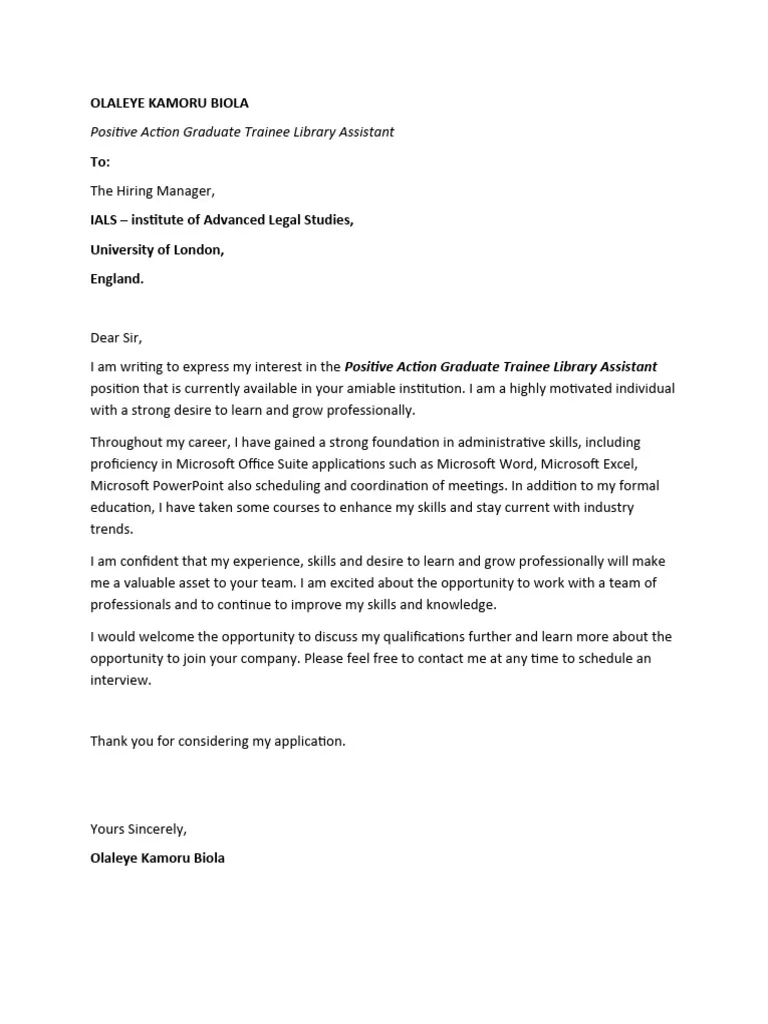
Thoroughly research the company you are applying to before writing your cover letter. Learn about their mission, values, products or services, and recent activities. This demonstrates your genuine interest in the company and shows that you are a good fit for their culture. Visit the company’s website, read news articles, and check out their social media pages. In your cover letter, mention something specific that resonates with you about the company or the role. Tailoring your letter to the company’s unique characteristics increases your chances of capturing their attention.
Demonstrating Enthusiasm and Interest
Expressing your enthusiasm for the role and the company is crucial. Your cover letter should communicate your genuine interest in the opportunity. Show that you have researched the company and understand what they do. Mention specific aspects of the role or the company that appeal to you. Use positive and energetic language. Let your passion for the job shine through. Your enthusiasm can make a strong impression and set you apart from other candidates. Demonstrate your excitement for the chance to contribute and be a part of the team.
Using a Professional Tone
Maintaining a professional tone is essential in your cover letter. Your writing style should be clear, concise, and respectful. Avoid using overly casual language, slang, or jargon. Use formal language and grammar. Proofread your letter carefully to eliminate any errors that could undermine your professionalism. The goal is to communicate your skills and experience in a way that shows you are serious and capable. It’s not just about what you say but how you say it. Always use polite and respectful language. Demonstrate the appropriate tone to your potential employer.
Avoiding Clichés and Generic Phrases
Avoid using clichés and generic phrases that can make your cover letter sound unoriginal and uninspired. Phrases like ‘hard worker,’ ’team player,’ and ‘results-oriented’ are overused. Instead, use specific examples and highlight your unique strengths. Tailor your language to the job and the company. Use a conversational and authentic tone. These phrases are vague and lack the impact that specific details provide. Differentiate yourself from other candidates. The best cover letters are original and express your individuality.
Keeping it Concise
Keep your cover letter concise and focused. Employers often have to review many applications, so it’s important to make a strong impression quickly. Aim for one page in length. Focus on your most relevant qualifications and achievements. Avoid rambling or including unnecessary details. Your goal is to grab the employer’s attention and encourage them to read your resume. A well-written, concise cover letter is much more effective than a long, rambling one.
Structuring for Readability
Structure your cover letter for easy readability. Use clear headings, concise paragraphs, and bullet points where appropriate. Make sure that you use white space effectively. A well-structured cover letter is easy to follow. Your goal is to make it easy for the reader to find the information they need. A clear and organized cover letter demonstrates your attention to detail.
Font and Formatting Guidelines
Choose a professional font, such as Arial, Times New Roman, or Calibri. Use a font size between 11 and 12 points. Maintain consistent formatting throughout your letter. Use appropriate margins and spacing. Ensure your cover letter is visually appealing and easy to read. Proper formatting shows your attention to detail and professionalism.
Choosing the Right Tone
Choose the right tone for your cover letter. Be professional, enthusiastic, and confident. Tailor your tone to the specific company and role. Show your personality, while maintaining a respectful and appropriate voice. Your goal is to express your genuine interest in the job and the company.
Avoiding Typos and Grammatical Errors
Avoiding Typos and Grammatical Errors
Typos and grammatical errors can damage your credibility. Proofread your cover letter meticulously, and use spell-checking and grammar-checking tools. Ask a friend or family member to review it. Correct all errors before submitting your letter. A perfect cover letter demonstrates your professionalism and attention to detail.
Using a Professional Email Address
Use a professional email address for your job application. Avoid using nicknames or unprofessional addresses. Your email address is part of your professional presentation. Choose an address that includes your name.
Checking Your Cover Letter on Different Devices
Check your cover letter on different devices to make sure it displays correctly. Ensure that it looks professional on all devices. Your cover letter should be readable on all devices.
